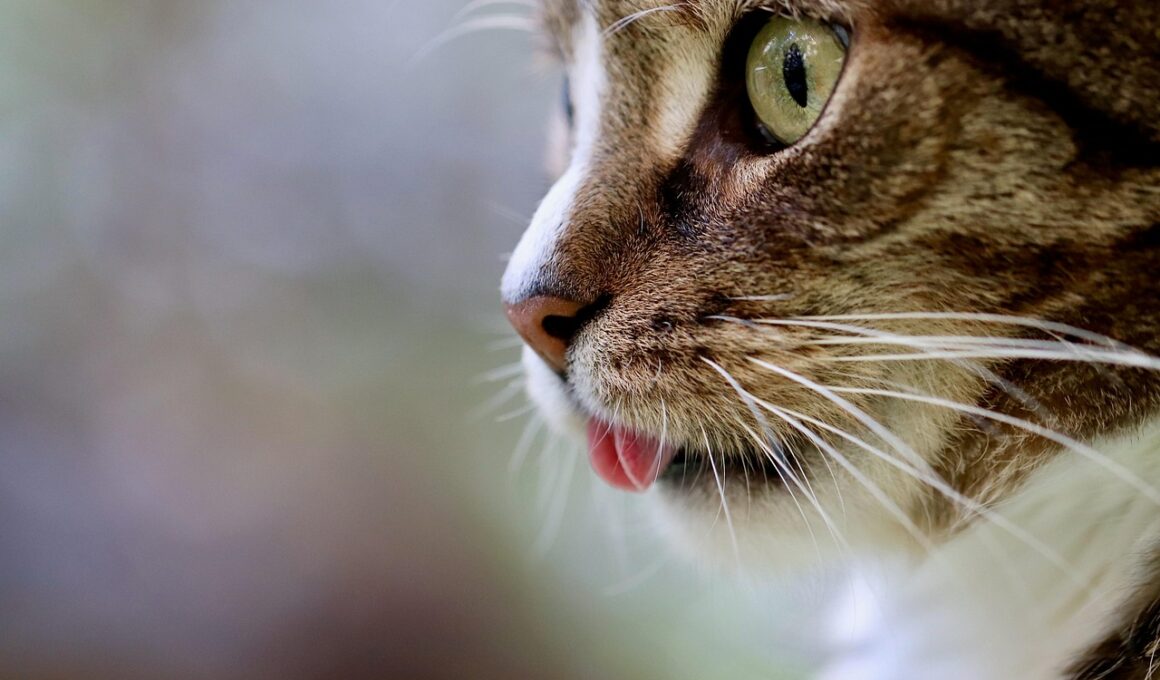Success Stories from Cat Vaccination Campaigns
In recent years, various initiatives have emerged to increase awareness about the importance of cat vaccinations. Families with pets have become more educated about preventing diseases such as feline leukemia and rabies. One remarkable campaign involved partnerships between local veterinarians and animal shelters. These efforts emphasized the significance of vaccinating cats to protect not just individual pets but entire communities. They aimed at reducing the risk of outbreaks through comprehensive vaccination drives, which included free vaccine days for low-income families. Many pet owners reported a keen increase in the number of vaccinated cats in their neighborhoods, fostering safer environments for all. Additionally, veterinary clinics offered discounts on vaccinations during specific periods, promoting a greater uptake of these vital health services. Informing communities about the potential risks of not vaccinating their pets prompted widespread interest. Social media platforms also played a crucial role in amplifying these messages, with many organizations sharing success stories to encourage others. The positive feedback from participants further validated these campaigns, showcasing a collective commitment to feline health and community welfare.
The Role of Community Engagement
Community engagement is a vital component of successful cat vaccination campaigns. By collaborating, local stakeholders like veterinarians, shelters, and pet owners work towards a common goal. For instance, one campaign in a suburban area saw local schools involved, with students learning about responsible pet ownership. Information sessions were held to educate families about the necessary vaccinations for their cats, alongside the potential consequences of neglecting their pets’ health. Schools created projects that promoted awareness of the risks associated with unvaccinated cats. This involvement led to an increase in both awareness and participation from local residents, as families rallied together for the wellbeing of their pets. Engaging local influencers helped share personal testimonies, enhancing credibility and drawing in more participants. By bringing together diverse voices and perspectives, these awareness campaigns managed to foster a sense of community responsibility. Engaging the public through interactive events, like vaccination fairs, allowed for easy access to services while emphasizing the importance of vaccinations. By harnessing community bonds, these campaigns proved that joint efforts could result in significant health improvements for feline populations.
One of the most successful vaccination campaigns combined educational outreach with accessible vaccination services. Animal welfare organizations collaborated with local veterinarians to offer mobile vaccination clinics. These clinics traveled to underserved neighborhoods, breaking down barriers that often prevent access to veterinary care. The initiative received overwhelming community support; over 300 cats were vaccinated during the first weekend alone. Many residents shared their gratitude, emphasizing how difficult it had been to care for their pets without affordable veterinary services. Testimonials poured into social media channels, further inspiring others to consider the benefits of vaccination. Stories of cats saved from serious diseases resonated with potential participants, driving home the point that prevention is better than cure. The project was praised not only for its medical impact but also for fostering community spirit. Local volunteers stepped up to help organize the event, proving that community-driven health initiatives can create lasting change. As awareness spread, the initiative expanded to include educational segments, teaching families about health risks and proper pet care. Accordingly, this campaign transformed from a mere vaccination effort into a comprehensive educational hub for pet wellness.
The Impact of Social Media
Social media platforms have played an indispensable role in the success of cat vaccination campaigns. Organizations leverage these channels to disseminate critical information about vaccination schedules, available clinics, and the necessity of preventative care for felines. Engaging graphics and heartwarming stories about vaccinated cats have flooded timelines, sparking discussions about pet health. Viral posts featuring adorable cats receiving their shots encouraged other pet owners to share their experiences, fostering a sense of belonging. These platforms enabled advocates to reach broader audiences than traditional outreach methods could achieve. Virtual events such as live Q&A sessions with veterinarians provided valuable opportunities for owners to ask questions and obtain trustworthy information. Moreover, campaigns often use hashtags to track engagement and participant feedback, helping to optimize future initiatives. By tapping into the emotional side of pet ownership, concerns about vaccinations transformed into narratives that promoted action. This strategy proved particularly useful in combating misconceptions around vaccines. By educating the public in an informal manner, these campaigns built trust and community involvement that was critical to their success, enabling thousands of cats to receive needed vaccinations.
An inspiring story from a recent campaign in an urban neighborhood exemplifies the transformative effects of targeted educational strategies. A local animal welfare organization partnered with businesses to distribute flyers and posters promoting free vaccination events. These materials provided not only information on where and when to get vaccinations but also highlighted compelling statistics that raised awareness. The campaign included illustrated guides on the vaccination process, dispelling myths and addressing common concerns regarding side effects. This clear communication made pet owners feel more comfortable in making informed decisions about their cats’ health. On vaccination day, over 150 cats received immunizations, with many families expressing relief at the accessible resources. After the successful event, testimonials highlighted how many families were unaware of the risks their pets faced. The educational effort endured through follow-up newsletters that maintained engagement with the community on pet care and available services. Workshops were organized to continue the dialogue and promote responsible pet ownership post-event. This multi-pronged approach demonstrated how education paired with access can amplify the overall impact of vaccination campaigns, promoting long-term pet health.
Challenges and Resolutions
Implementing cat vaccination campaigns can pose several challenges, but innovative solutions can lead to successful outcomes. A common obstacle is overcoming the skepticism from pet owners regarding vaccinations. Some cat owners fear adverse reactions, leading to reluctance in seeking necessary health care for their pets. In response, campaign organizers established partnerships with veterinarians to create educational workshops focused on addressing these concerns. These workshops provided a platform for veterinary professionals to share myths and facts about vaccinations, reassuring pet owners of their safety and importance. Furthermore, creating engaging content for social media proved critical in addressing common misconceptions. Campaigns encouraged pet owners to share their personal stories about successfully vaccinated cats. This grassroots outreach not only built trust but also fostered community dialogue around pet health. Another significant challenge was budget constraints, particularly in low-income areas. To resolve this, campaigns sought sponsorships from local businesses willing to contribute resources or funds. Collaboration among various stakeholders led to community support that benefited everyone, allowing for sustainable practices in ensuring the health of feline populations, ultimately saving lives through preventative care initiatives.
To conclude, the success stories from cat vaccination campaigns underline the importance of collective action in promoting pet health. Increased awareness about vaccination benefits has significantly reduced the occurrence of preventable diseases in felines. Listening to the community’s needs enabled stakeholders to cater effective campaigns tailored to local demographics. Accessible vaccination services have empowered countless pet owners to vaccinate their cats. Feedback loops garnered through social media engagement and in-person discussions continually shape future initiatives. By fostering community bonds, the campaigns not only increased vaccination rates but also elevated overall pet wellness. Veterinary partnerships were crucial in delivering credible information and personalized care that resonated deeply with pet parents. The results showcase hope and progress through collaboration, education, and accessible veterinary services. Encouraging responsible pet ownership and ingredients to keep cats healthy reflects a positive shift in how public health interacts with animal welfare. As these successful campaigns continue to inspire future efforts, they open pathways for innovative approaches to overcome barriers, proving that communities can become heroes in advocating for animal health.


